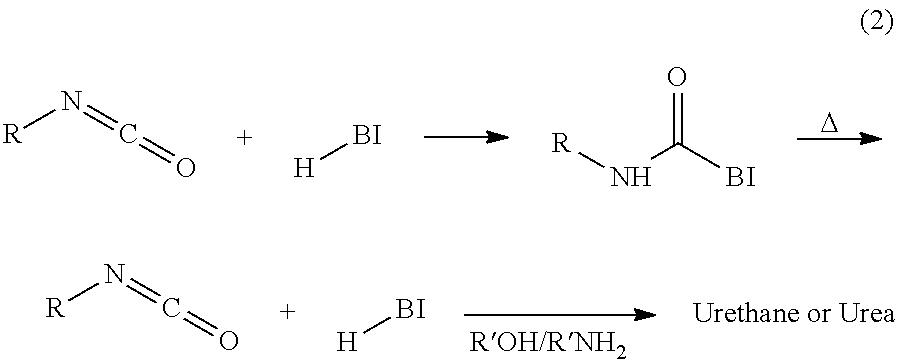Degradable non-aqueous gel systems
- Summary
- Abstract
- Description
- Claims
- Application Information
AI Technical Summary
Benefits of technology
Problems solved by technology
Method used
Image
Examples
example 1
[0075]A non-aqueous gel was prepared by blending in each component until homogenous 15 mL of a SPUR 1050MM resin (silylated polyurethane) available from Momentive Performance Materials (Winton, Conn.) in 15 mL of a C16-18 internal olefin base oil, 0.3 g of AEROSIL® R-972, a fumed silica filler available from Evonik Industries (Essen, Germany), 5 mL of octyltriethylsilane, 0.3 mL VX-225, an aminosilane available from Momentive Performance Materials, and 2.1 mL of a 2.5:1 triisopropylamine:ethylene glycol blend. The components were placed in a hot roller at 150° F. for approximately 15 minutes to allow sample to warm, and then placed in an oven at 170° F. until set.
[0076]Gels samples (˜1 cm3 pieces) were subjected to various breaker fluids, and the time required to break down was recorded for each breaker fluid. The results are shown below in Table 1.
TABLE 1Time Requiredto BreakDown (min)Broken atBroken atSample No.Breaker Solution120° F.170° F.1BLANK-100% ESCAID 110NotNot2BLANK-100% ...
example 2
[0077]Non-aqueous gels were prepared as described in Example 1, with the use of ESCAID 110 for the C16-18 internal olefin base oil. Gels samples (˜1 cm3 pieces) were subjected to various breaker fluids, and the time required to break down was recorded for each breaker fluid. The results are shown below in Table 2.
TABLE 2TIME REQUIREDTO BREAKDOWN (mins.)Sample No.Breaker Solution(@ 120° F.)(@ 170° F.)1BLANK 100% ESCAID 110NotNot2BLANK 100% IO 16 / 18NotNot3BLANK 100% H2ONotNot447.5% ESCAID 110-47.5% ISOPROPANOL-5% KOH120 75590% ISOPROPANOL-10% KOH135 90647.5% IO 16 / 18-47.5% ISOPROPANOL-5% KOH135 90790% DIETHYLENEGLYCOLMONOETHYLETHER-405 (90%)16510% KOH890% DIPROPYLENEGLYCOLMONOMETHYLETHER-405 (60%)10510% KOH990% Tripropylenebutylether-10% KOH450 (75%)2401090% Butoxytriglycol-10% KOH450 (50%)3001190% Surfadone LP 100-10% KOHNotNot1290% M-Pyrol-10% KOH4503001390% Di(propylene glycol) butyl ether-10% KOH360 (50%)1951490% Diethylene glycol butyl ether-10% KOH360 (50%)2701590% H2O-10% KOHNo...
PUM
 Login to View More
Login to View More Abstract
Description
Claims
Application Information
 Login to View More
Login to View More - R&D
- Intellectual Property
- Life Sciences
- Materials
- Tech Scout
- Unparalleled Data Quality
- Higher Quality Content
- 60% Fewer Hallucinations
Browse by: Latest US Patents, China's latest patents, Technical Efficacy Thesaurus, Application Domain, Technology Topic, Popular Technical Reports.
© 2025 PatSnap. All rights reserved.Legal|Privacy policy|Modern Slavery Act Transparency Statement|Sitemap|About US| Contact US: help@patsnap.com


